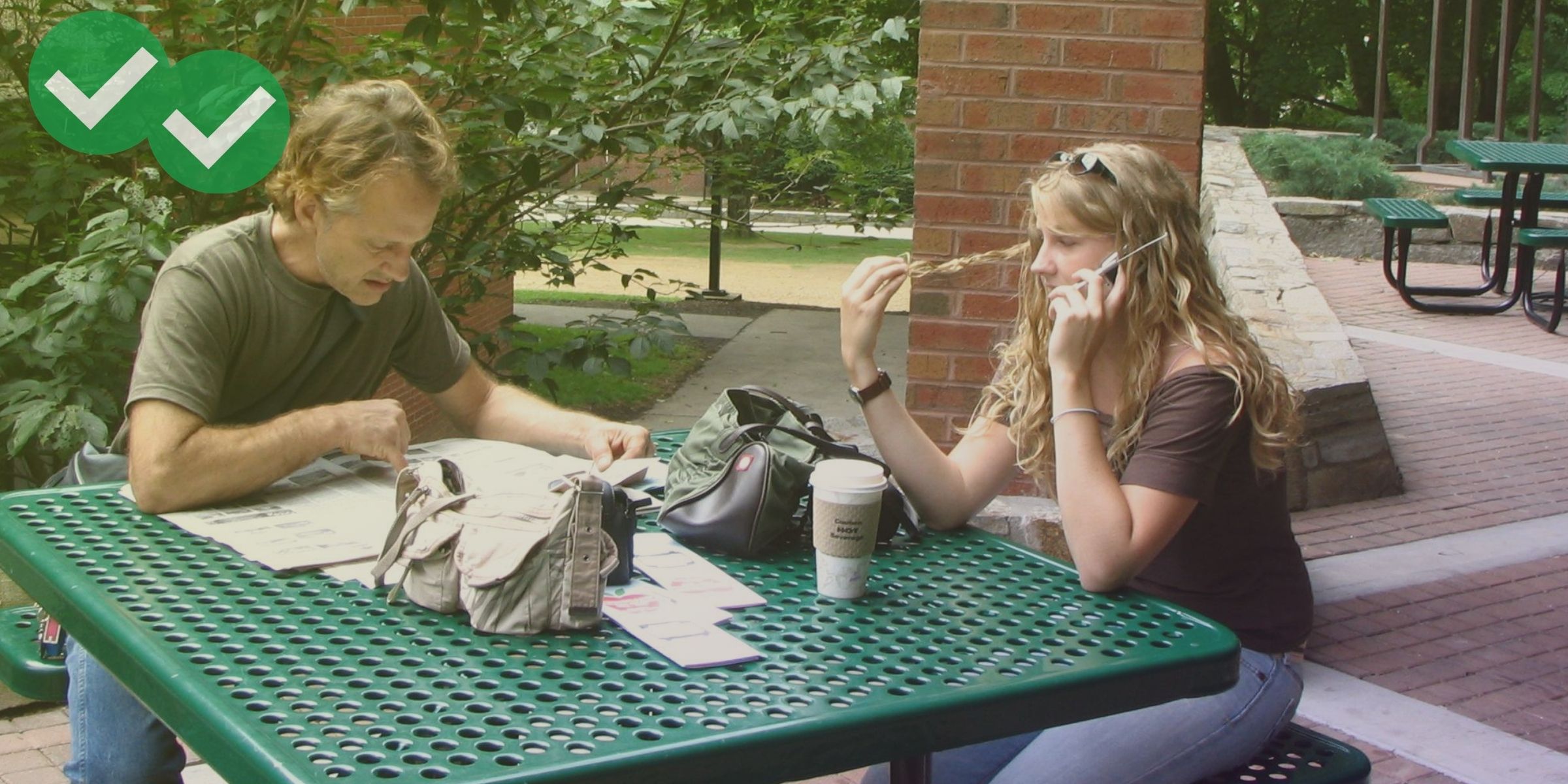
TOEFL Writing Task 1 is challenging, but it can be beat! Magoosh has put together a comprehensive TOEFL Integrated Writing guide. And in this post, you can learn even more about the specific skill of paraphrasing in this first TOEFL Writing task.
The TOEFL Integrated Writing passage stays in front of you on the screen. So copying the original wording can be easy–so easy you can do it by accident. You’ll be mentally tired because you’re near the end of the TOEFL exam. The original words in the passage will be right in front of you, and you may unthinkingly copy them.
To get a good score on TOEFL Writing Task 1, you need to paraphrase the passage, not copy it. The trick here is to focus on the ideas in the passage, not the exact wording. But how can you do this? There’s a mental exercise that can help you. Below, I’ll walk you through a useful approach to paraphrasing in TOEFL Integrated Writing.
Focus on the noun phrases and verb phrases
Noun phrases and verb phrases carry most of the important information in a passage. (See the post “Reviewing Phrases” for more information on noun and verb phrase structure.) Nouns and verbs represent the key ideas you need to paraphrase. And remember, you really are just paraphrasing ideas; in TOEFL Integrated Writing, you don’t need to paraphrase whole sentences from the passage. And you want to avoid paraphrasing long, complicated phrases. By focusing on the nouns and verbs, you can see the most basic ideas in a passage expressed can be reduced to individual words and small phrases.
Below, I will show you the reading passage from a TOEFL Integrated Writing Practice Task here on the Magoosh TOEFL Blog. (And for one additional free TOEFL Integrated Writing practice task, see Magoosh’s complete guide to TOEFL Writing samples.) I have identified the noun phrases and verb phrases that carry the most important information, and I’ve put them in bold.
TOEFL Integrated Writing passage: The key nouns and verbs
.jpg)
The “comics medium” includes newspaper comic strips such as Dennis the Menace and comic books such as Spider-Man. Scholars around the world agree that comics are a uniquely American art form.
The first commercially successful comic strip was Hogan’s Alley, a comic strip from the 1890s. Hogan’s Alley featured the Yellow Kid, the world’s first popular cartoon character. This strip and its character marked the beginning of comics and was American in every respect. Set in a low-income neighborhood in New York City, Hogan’s Alley dealt with the lives of ordinary Americans. It was written and drawn by American cartoonist R.F. Outcault. Joseph Pulitzer and William Randolph Hearst, two famous and influential American publishers, printed the comic strip in their newspapers.
The first popular comic book in the world was also American. Action Comics, a series that is still in print today, was initially released in 1938. It featured Superman, the world’s first superhero. Like Hogan’s Alley, Superman was American-created.
Americans invented comic strips, and Americans have exported their unique art form to the rest of the world. Japanese comics, called manga, were inspired by the comics that Americans brought to Japan after World War II. Popular European comics series such as Smurfs and Asterix are influenced by Disney comic books. Today, American-created Disney comic characters are more popular in Europe than ever.
The comics medium started in America. While it has spread around the world, even comics that aren’t created by Americans have an undeniable American influence. This is why so many art and literature scholars recognize the comic strip as a truly American art form.
How to select the most important noun and verb phrases
Think of the key phrases in the reading as a simple outline of the passage. If you take notes on the passage, the key phrases should be enough to show all of the most important ideas. In note format, the key phrases above would look like this:
- comics medium: newspaper strips, comic books, uniquely American art
- first successful comic strip, Hogan’s Alley: lives of Americans, American cartoonist, American publishers
- first popular comic book, Action Comics: Superman, American-created
- Japanese comics influenced by Americans, European comics inspired by American
Note that when I chose the keywords, I didn’t select Dennis the Menace or Spider-Man. This is because these comics are just being named as general examples. They don’t have specifial historic significance like Hogan’s Alley or Superman, two names I did choose to highlight as key terms.
I also chose not to select the proper nouns Smurfs, Asterix, or Disney. In the context of the passage alone, those names also seem like unimportant general examples. Those names actually do prove to be important later in the task, because they are mentioned in the lecture (which can also be found in the original TOEFL Integrated Writing Practice post). But that’s OK–if you miss a few of the key ideas in the passage, you can still notice them when you listen to the lecture. So for now, we can just focus on the words I put in bold.
As you saw, I turned the important noun phrases and verb phrases into a set of notes–a passage outline. While you can do this in your own Integrated Writing practice, there’s a better way. What you should really do is make an even simpler outline. Your outline should paraphrase the key nouns and verbs you chose from the passage. A simpler outline based on the important noun and verb phrases above might look like this:
- comics medium (newspapers, books) = American art
- Hogan’s Alley, American story, creator/publisher, 1st comic strip ever
- original comic book, Action Comics: Superman, American
- Japanese and European comics copy American style
And now I have a set of notes that paraphrases the original wording from the passage. I can use these paraphrased words in my own essay without having to worry about plagiarism on the TOEFL. Even better, with these key ideas correctly paraphrased, it’s not necessary to even look at the passage anymore. And once you stop looking at the passage itself, there is no more risk that you’ll accidentally copy its wording too closely.
Final note: For more TOEFL Writing topics to practice with, both for Integrated Writing and Indepdnent Writing, see Magoosh’s collection of TOEFL Writing topics.





